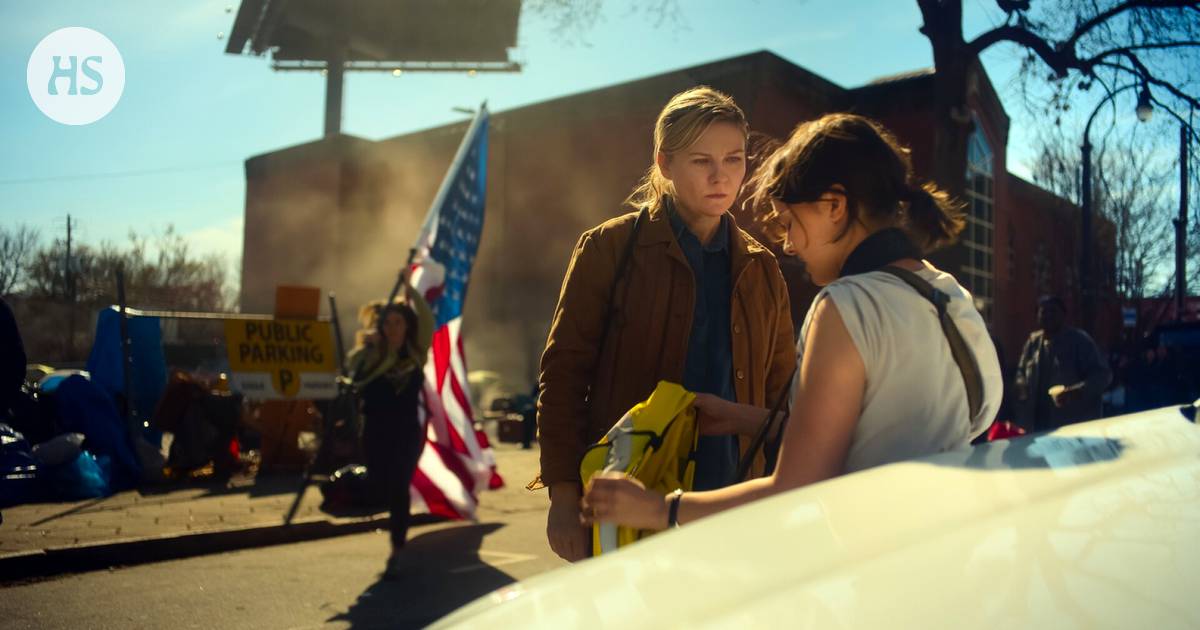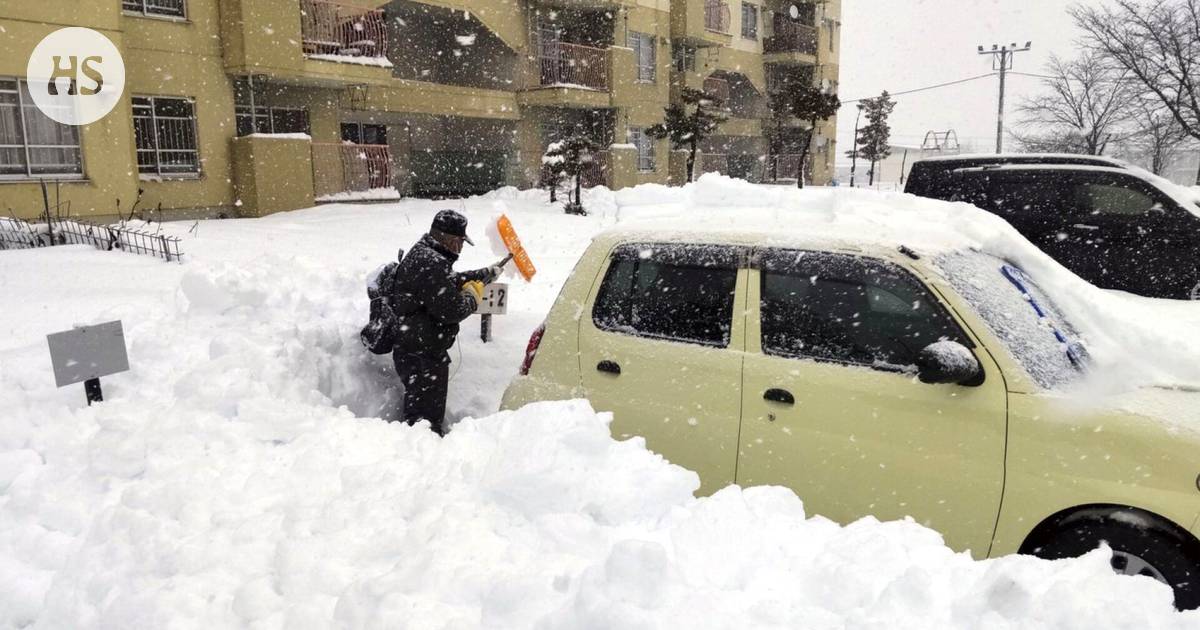Photo artist Hannele Rantala has also worked as a magazine photographer and has drawn influences from both Moscow and Paris in her work. “The Soviet Union was the point where I thought I would become an artist,” says Rantala.
Hannele Rantala the themes of art signify decades of thought, life and work. Questions and answers, in pictures and texts. There are many themes. War, exile, shame, free will and power, human touch, love and death. Time too.
This year they emerged from Rantala’s book Fiasco and his works of the Ateneum Art Museum Dialogue-in the exhibition together Elina Brotherus with.
Little the war that started in February after the exhibition opened, Russia’s attack on Ukraine, was not a surprise for Rantala. The possibility of that was already present Fiasco based exhibition in 2018.
“If I think about myself, my themes have come through my parents. I don’t know if I chose the subjects or if I just had them because they were built into me at birth.”
The father was from Vyborg and the family had fled from there during the war. Mother was from Suistamo.
“My mother never talked about evacuees, but about refugees,” he emphasizes.
Refugees and war are taking their toll. Rantala has dealt with them in his works, photographs, installations and performances.
On the beach has a long career as an artist. Art has been his job for decades. Rantala got the tools for art from Savonlinna art high school at the turn of the 1960s and 1970s.
“I have never said that I have made a change in life. When I once went to art high school, I thought I would study art there.”
“Perception. Eye, brain and hand cooperation. For three years, a living model was drawn and painted. I didn’t see the importance of that teaching until ten years after finishing art schools.”
Rantala started on the path of an artist, but the beginning of the path is already in childhood.
Another thing that has gone its own way is gender.
“In art schools, the teachers were men, many of the students were mainly women. However, everything that was taught touched men. So descriptive for my age group. I was almost 30 years old when I realized it.”
The same books were studied in the art high school as in the basic courses at the university. by H. W. Janson Great art history was Bible a larger book that presented the “grand narrative” of art history from prehistoric times to the 1960s. The new currents of today were not included, and neither were women.
Hannele Rantala has taken Caravaggio, who made art with light and shadows, as her guiding star.
Sexual came to the fore when Rantala, after art high school, tried twice in vain to become a photography student at the University of Applied Arts and Technology and finally got in. A couple of years after that, he was chosen to study journalism at Sanomat’s journalist school.
“In the art industry, I was bullied first because I was a woman.”
“In the interview at the editor’s school, they asked if there are any female newspaper photographers in Finland. When I said that I don’t know, the members of the jury looked at each other and I knew right away that I had made it in. In Hesar, gender was an advantage. I was wanted there.”
Journalist school included working at Helsingin Sanomat, where he soon got a permanent position as a photojournalist. His spouse at the time got a job as a newspaper correspondent in Moscow, where Rantala spent four years, 1983–1987. He did the work of a magazine photographer, but also other things.
“The Soviet Union was the point where I thought I would become an artist. I went back to what I found there in art high school to Caravaggio and I moved on.” By Caravaggio, he means the Baroque Italian artist of the 16th–17th centuries, the light and shadow of his paintings.
In Moscow, the Tretyakov Gallery was full of gigantic works of socialist realism. But somewhere in the corner, Rantala saw Kazimir Malevich Black square in the dust.
In Moscow, there were conceptualists, local underground artists. It was a different kind of conceptual art than what American conceptualism was used to.
“It changed my perception of art.”
“People still don’t realize how different a world I lived in the Soviet Union. The atmosphere of fear that has come back now.”
of Moscow after that, he continued for some time as a freelance magazine photographer.
Actually, he started all over again. He left the newspaper job and went to Paris, where he worked a few times in an artist residency at the Cité internationale des arts since 1992. There were residencies elsewhere, and for a while he had a small apartment in Paris.
The first time he met the artist in the Cité Kuutti Lavonen, to which he sighed that “I can’t become an artist when I don’t have any medium, even if there is something to say”. Lavonen stopped his thoughts: “But you have a camera.”
It felt like an electric shock. He had a camera.
Rantala began to photograph the trash he found on the streets of Paris: “I cried and howled when I photographed them.”
A photo series was born Entre monde et Paradis, which was exhibited in the big Paris Salon in the Grand Palais in 1992. Since then, the pictures have also been seen in exhibitions in Finland. The pictures in the series show the precise framing of Hannele Rantala’s photographs and the “chiaroscuro” of Caravaggio. Lights and shadows transform trash into beauty.
Since then, he has swept up trash in his performances from Stockholm to New York, Vyborg and Helsinki. As a sweeper, he felt shame until he put on the street sweeper’s yellow attention vest. The uniform removed the feeling of shame.
Trash is like people defined as strangers. It’s all about chance. Rantala resembles a Hungarian Imre Kertész from the novel Fatelessness (1975).
“A person is taken from his everyday activities to a concentration camp or to war and other, completely unknown people decide on his life and death.”
“That’s how much decision-making power we all have over ourselves!”
-
Born and lives in Helsinki.
-
Savonlinna High School of the Arts 1972. University of the Arts, photography 1974–79. Sanomat journalist school 1976.
-
Exhibitions since 1982. Salon d’automneParis 1992. The end of the good timesretrospective exhibition 1975–2015, Museum of Photography 2015. FiascoPhoto gallery Hippolyte 2018. DialogueJoint exhibition with Elina Brotherus, Ateneum Art Museum 2022.
-
Performances and shows since 2005. Sand circle 2005. Have you seen this woman? Lost person search series, Stockholm, Viipuri, New York, Helsinki 2008–2015.
-
Books and publications since 2007. The latest is Fiasco2022.
-
Permanent works. Pure artMuseum of Photography 2009. Registertactile marble tile, Kiasma 2009.
-
Works in several collections.
-
Turns 70 on Sunday, August 28.
#years #Hannele #Rantala #received #art #lessons #childhood #tools #art #high #school #lampshade #Caravaggio





/https://content.production.cdn.art19.com/images/85/e1/88/31/85e18831-d8c5-4562-b0ab-8efb9a199a7f/efc0bf0c822e01150404492419e9359658499ab01930af5a749322a0e95585)



